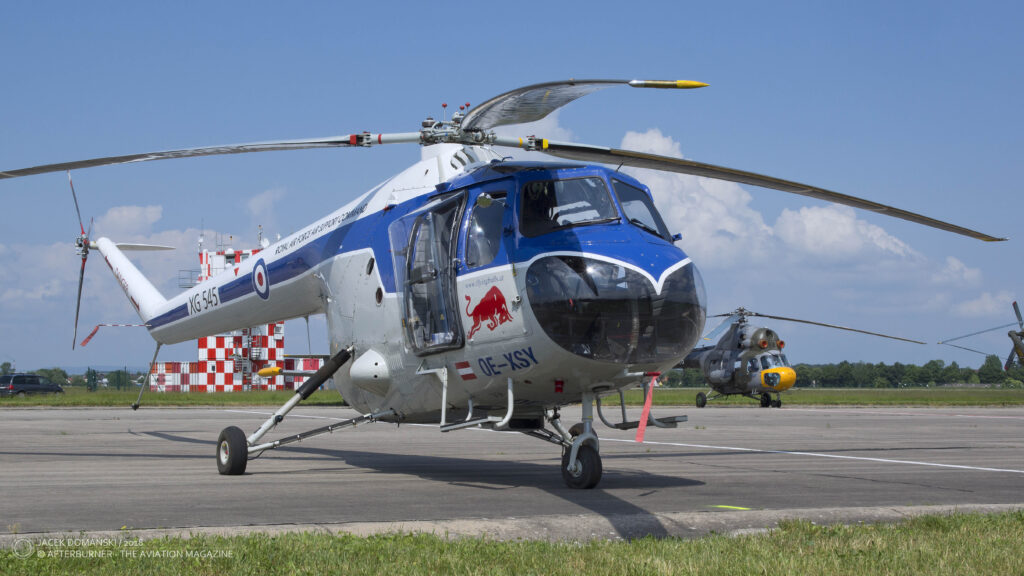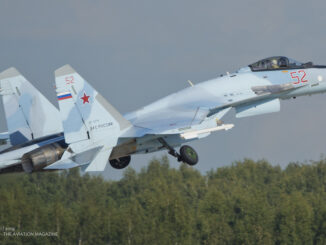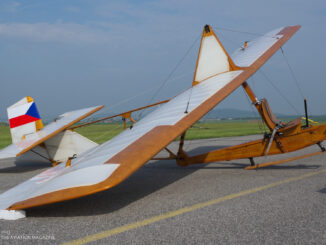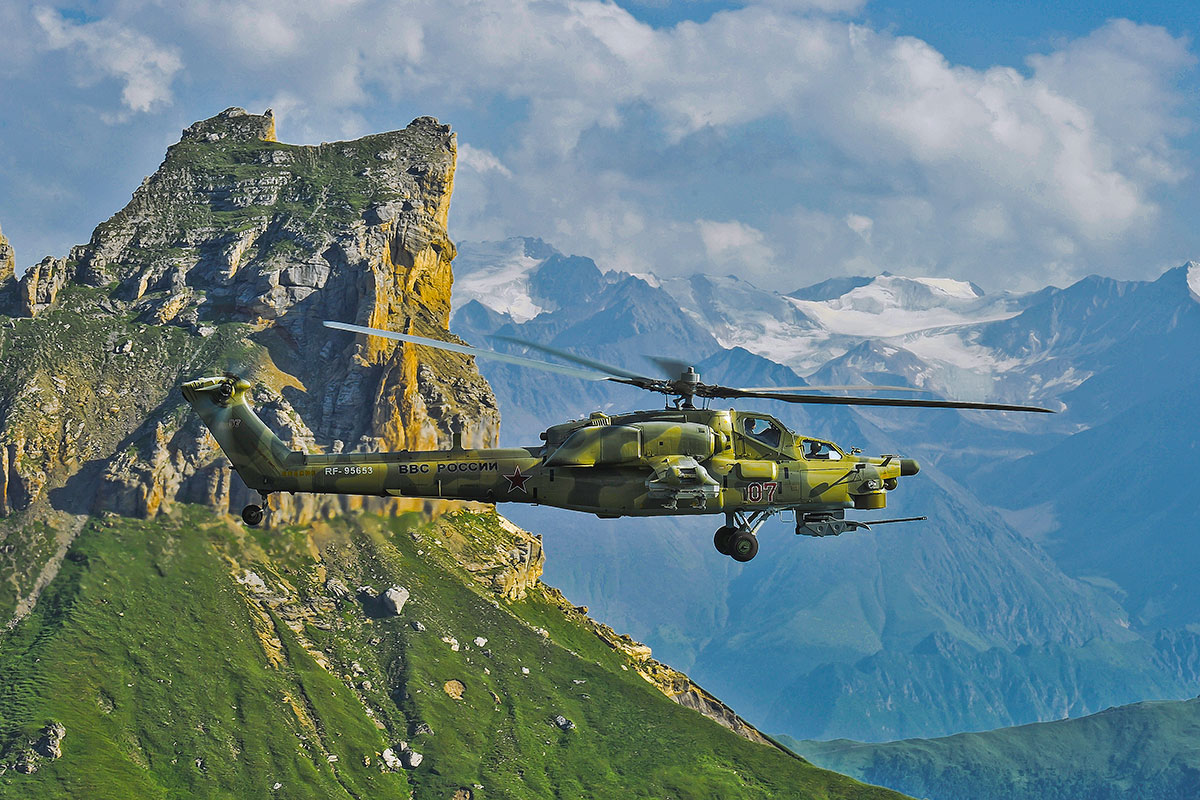 Bristol Type 171 Sycamore (OE-XSY, formerly ´78+17´ Bundeswehr/Heer) from the Flying Bulls collection, static display at Helicopter Show 2018, Hradec Králové, May 2018.
Bristol Type 171 Sycamore (OE-XSY, formerly ´78+17´ Bundeswehr/Heer) from the Flying Bulls collection, static display at Helicopter Show 2018, Hradec Králové, May 2018.
The story of British rotorcraft development have started with Airborne Forces Experimental Establishment (AFEE), a specialised branch of the Air Ministry established in 1942. The AFEE was formed to provide research and development works on non-traditional aircraft and airborne applications, including gliders, rotorcraft and parachutes.
Horsa and Hamilcar gliders, used inter alia during Operation Overlord, are the most-known aircraft developed by the AFEE. Nevertheless, research on a rotary wing aircraft was done at this branch of Air Ministry from the very beginning. It included testing of British and captured helicopters and autogyros – Focke-Achgelis Fa 330, Flettner Fl 282, Focke-Achgelis Fa 223, Cierva and Sikorsky Hoverfly.
One of the earliest rotorcraft evaluated at the AFEE were Hafner Rotachute rotor kite and Hafner Rotabuggy, the latter also known as ´Flying Jeep´. Both were designed by Raoul Hafner – an Austrian-born engineer and helicopter pioneer, who moved his aviation development activities to England in the mid-1930s.
In 1944, Bristol Aeroplane Company established a rotorcraft division. Shortly thereafter, Hafner´s company was acquired by Bristol and he was appointed a head of its helicopter branch. It coincided with successful Allied landing operation in Normandy, followed by ease of pressure on the AFEE personnel – when it became clear that the end of the war was near, helicopter development has received the priority.
Already in June of 1944 a programme of creating a four-seat helicopter for both civil and military use was launched at Bristol, obviously being led by Hafner. That development resulted with a prototype of rotorcraft powered by 340 kW Pratt & Whitney engine that performed its maiden flight on 25th July 1947.
The rotorcraft was named ´Sycamore´, with reference to seeds of the sycamore tree (Acer pseudoplantanus) that fall with a rotating motion. Further works on the prototype resulted in so called Mk.2 variant, being powered by a 410 kW, nine-cylinder Leonides powerplant, manufactured by Alvis Car and Engineering Company. Alvis Leonides then became the standard engine used with all Sycamore variants. On 25th April 1949, the Sycamore helicopter received its certificate of airworthiness, thus officially becoming the very first British-made helicopter.
In April 1953, the new helicopter entered service in the Royal Air Force. It was also used by the Army Air Corps and evaluated by the Royal Navy – including a series of landings performed on board the HMS Triumph aircraft carrier.
The Bristol Sycamore was mainly used for search and rescue missions and casualty evacuation. Its combat record includes operations known as the Malayan Emergency, the Cyprus Emergency and the Aden Emergency. Three helicopters were delivered to Belgium and operated in Congo – being also the very first rotorcraft in the Belgium Air Force inventory.
In 1957 a total of fifty Sycamores were exported to Germany and became the very first helicopters in the German armed forces. Initially, they were operated by Luftwaffe but in June of 1958 ten helicopters were handed over to Marineflieger (naval aviation). In addition, ten Sycamore rotorcraft were being used by the Royal Australian Navy and another two by the Royal Australian Air Force.
Only the military helicopters were officially recognised as ´Sycamore´, while the ones intended for civilian operators were designated just as Bristol Type 171. They were being used for a variety of roles and list of companies that flew the Type 171 includes such names as British European Airways and Australian National Airways.
There were only 180 Sycamore helicopters in all variants built until 1959, when the production was ceased. And thus it is no wonder that only a few of them survived until today.
The rotorcraft pictured above was built in 1957 and then served within the German armed forces. After its retirement, this Sycamore spent a few years in Switzerland and then was acquired for the Flying Bulls collection and restored to airworthy condition – now it is the sole airworthy Sycamore helicopter in the world. Although being made for Germany, the rotorcraft is now being displayed in original colours of the Royal Air Force.



